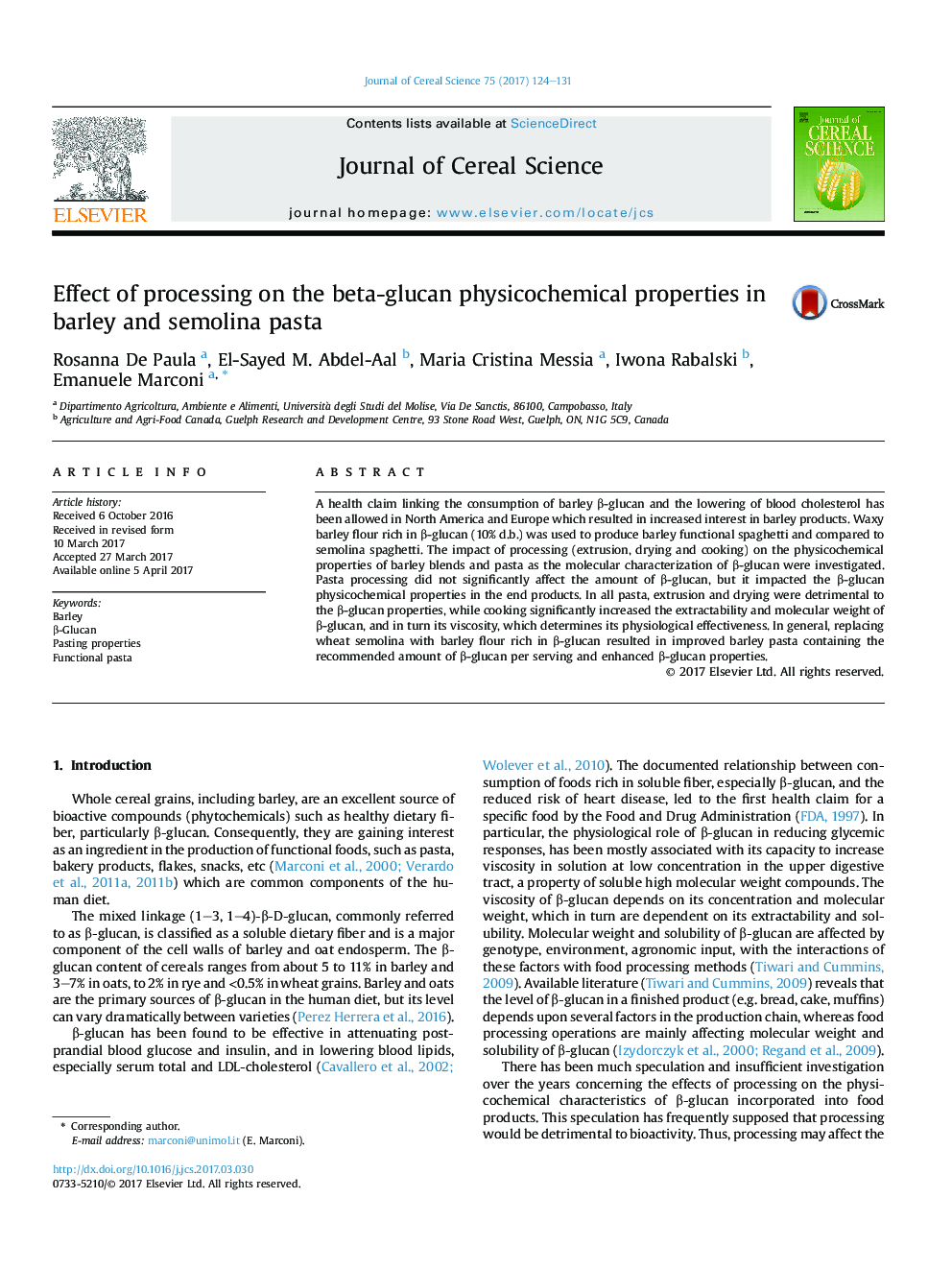| Article ID | Journal | Published Year | Pages | File Type |
|---|---|---|---|---|
| 5762362 | Journal of Cereal Science | 2017 | 8 Pages |
Abstract
A health claim linking the consumption of barley β-glucan and the lowering of blood cholesterol has been allowed in North America and Europe which resulted in increased interest in barley products. Waxy barley flour rich in β-glucan (10% d.b.) was used to produce barley functional spaghetti and compared to semolina spaghetti. The impact of processing (extrusion, drying and cooking) on the physicochemical properties of barley blends and pasta as the molecular characterization of β-glucan were investigated. Pasta processing did not significantly affect the amount of β-glucan, but it impacted the β-glucan physicochemical properties in the end products. In all pasta, extrusion and drying were detrimental to the β-glucan properties, while cooking significantly increased the extractability and molecular weight of β-glucan, and in turn its viscosity, which determines its physiological effectiveness. In general, replacing wheat semolina with barley flour rich in β-glucan resulted in improved barley pasta containing the recommended amount of β-glucan per serving and enhanced β-glucan properties.
Keywords
Related Topics
Life Sciences
Agricultural and Biological Sciences
Agronomy and Crop Science
Authors
Rosanna De Paula, El-Sayed M. Abdel-Aal, Maria Cristina Messia, Iwona Rabalski, Emanuele Marconi,
